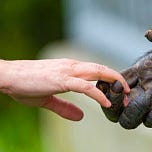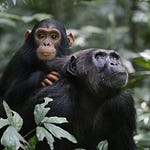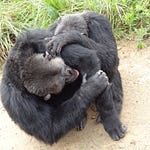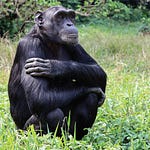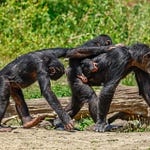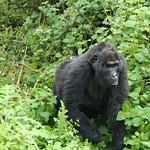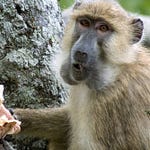For decades, a tidy statistic circulated in classrooms, popular books, and even scientific talks: humans and chimpanzees share 98.8% of their DNA. It was a number that promised clarity. Yet with the completion of the first full ape genomes, researchers are now showing that the reality is more complicated—and more interesting.

Chimpanzees (Pan troglodytes), along with bonobos (Pan paniscus), are our closest living relatives. Their genomes do indeed align closely with ours. But similarity depends on how comparison is done. The oft-quoted 99% figure emerged from aligning stretches of DNA letter by letter and counting the substitutions. The trouble is that not all DNA aligns neatly. Insertions, deletions, and duplicated regions—pieces of the genome present in one species but absent in the other—make up a much larger portion than once assumed.
“Earlier studies suggested a 98 to 99% similarity,” explained Tomàs Marquès-Bonet, a comparative genomics researcher at the Institute of Evolutionary Biology in Barcelona. “But when we include regions that are harder to align, the difference is closer to 5 to 10%. And if we count the regions still too complex to align properly with current technology, the true difference is likely to exceed 10%.”
The most recent work, published in Nature (Yoo et al. 2025)1, put that difference at around 15% once all sections are included. Even more striking, variation within chimpanzees themselves can reach up to 9%, meaning two chimps may differ from each other almost as much as either differs from us.
Why noncoding DNA matters
Most of the divergence lies in the noncoding portion of the genome—regions that do not encode proteins but instead regulate how, when, and where proteins are made. These “switches” have outsized effects. A small tweak in a regulatory sequence can alter the timing of development, the wiring of the brain, or the immune response to pathogens.
“Humans and chimps are made up of essentially the same building blocks,” said Katie Pollard of the Gladstone Institutes. “But how those blocks are used is different. Regulatory DNA controls the expression of genes, and that has major downstream effects.”
This view recasts the comparison: not so much two novels differing by a few typos, but two versions of the same library with different editing rules, shelving systems, and annotated margins.
A shared ancestry, a diverging future
None of this changes the close kinship between humans and other apes. The genetic differences pale beside the roughly 30% divergence between humans and rhesus macaques, or the far deeper split from mice. Yet by showing that variation within species is as important as variation between species, the new studies highlight just how dynamic genomes are.
As David Haussler of UC Santa Cruz has put it, comparing human and chimp genomes is like,
“comparing one version of a very long novel to another, very slightly edited version.”
The new work suggests those edits are sometimes whole missing chapters or new subplots.
The implications extend beyond evolutionary biology. Understanding the full scope of genetic variation within apes could reshape conservation strategies, refine biomedical research, and offer sharper insights into what makes Homo sapiens unique. The library of ape genomes is no longer a rough draft—it is now open in full, with all its complexity.
Related research
Prado-Martinez, J., Sudmant, P. H., et al. (2013). Great ape genetic diversity and population history. Nature, 499, 471–475. https://doi.org/10.1038/nature12228
Kronenberg, Z. N., Fiddes, I. T., Gordon, D., et al. (2018). High-resolution comparative analysis of great ape genomes. Science, 360(6393). https://doi.org/10.1126/science.aar6343
Marques-Bonet, T., Ryder, O. A., & Eichler, E. E. (2009). Sequencing primate genomes: what have we learned? Annual Review of Genomics and Human Genetics, 10, 355–386. https://doi.org/10.1146/annurev-genom-082908-150001
Yoo, D., Rhie, A., Hebbar, P., Antonacci, F., Logsdon, G. A., Solar, S. J., Antipov, D., Pickett, B. D., Safonova, Y., Montinaro, F., Luo, Y., Malukiewicz, J., Storer, J. M., Lin, J., Sequeira, A. N., Mangan, R. J., Hickey, G., Monfort Anez, G., Balachandran, P., … Eichler, E. E. (2025). Complete sequencing of ape genomes. Nature, 641(8062), 401–418. https://doi.org/10.1038/s41586-025-08816-3

